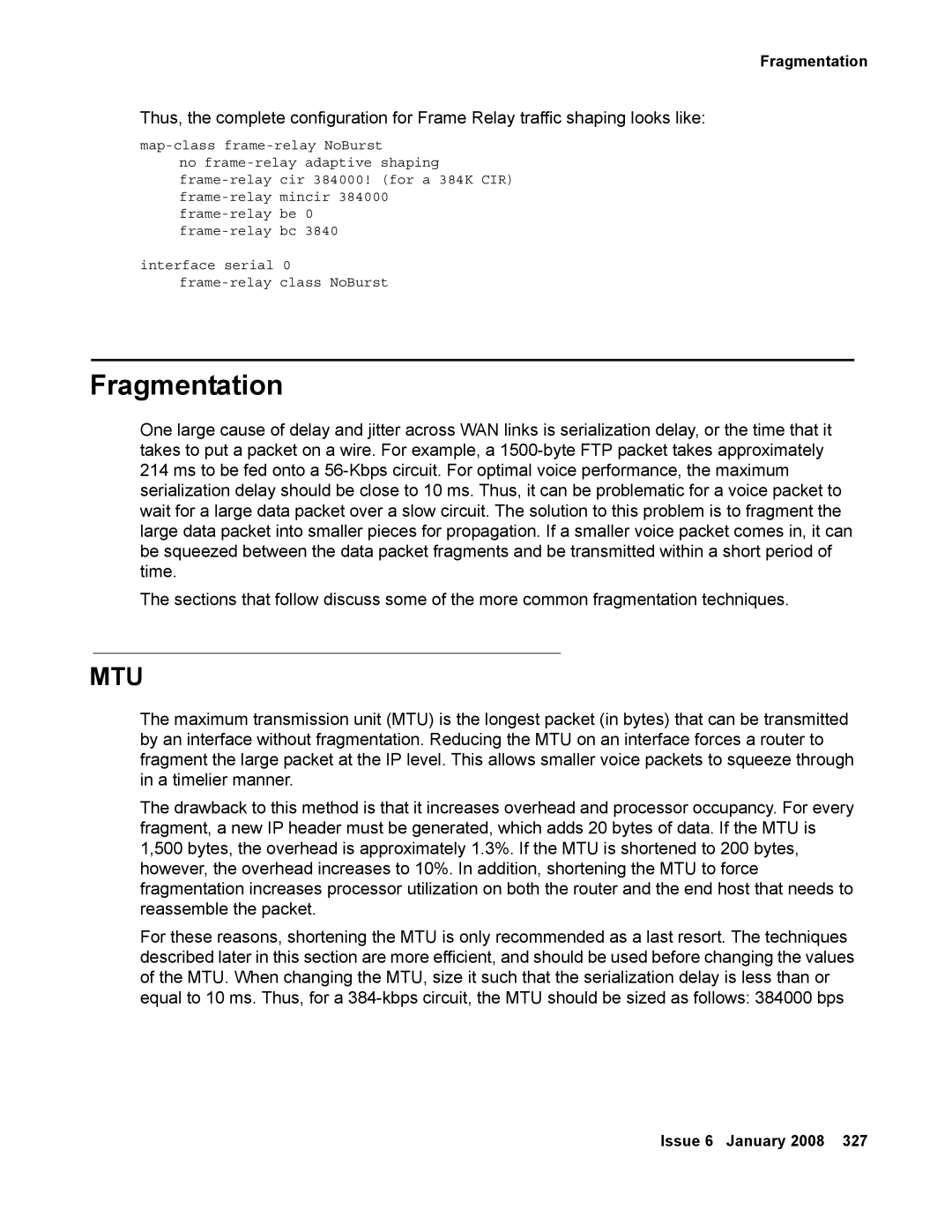
Fragmentation
Thus, the complete configuration for Frame Relay traffic shaping looks like:
no
interface serial 0
Fragmentation
One large cause of delay and jitter across WAN links is serialization delay, or the time that it takes to put a packet on a wire. For example, a
The sections that follow discuss some of the more common fragmentation techniques.
MTU
The maximum transmission unit (MTU) is the longest packet (in bytes) that can be transmitted by an interface without fragmentation. Reducing the MTU on an interface forces a router to fragment the large packet at the IP level. This allows smaller voice packets to squeeze through in a timelier manner.
The drawback to this method is that it increases overhead and processor occupancy. For every fragment, a new IP header must be generated, which adds 20 bytes of data. If the MTU is 1,500 bytes, the overhead is approximately 1.3%. If the MTU is shortened to 200 bytes, however, the overhead increases to 10%. In addition, shortening the MTU to force fragmentation increases processor utilization on both the router and the end host that needs to reassemble the packet.
For these reasons, shortening the MTU is only recommended as a last resort. The techniques described later in this section are more efficient, and should be used before changing the values of the MTU. When changing the MTU, size it such that the serialization delay is less than or equal to 10 ms. Thus, for a
